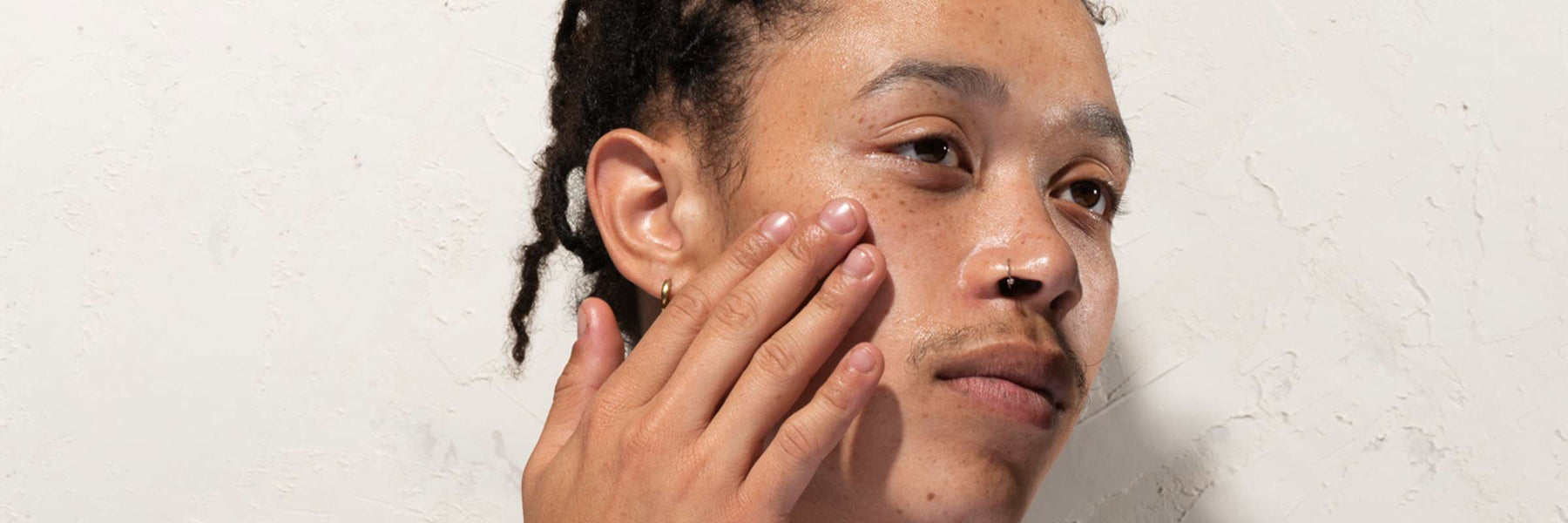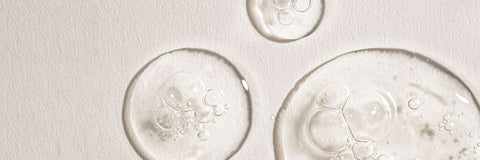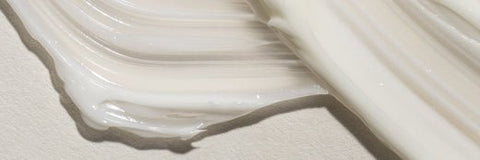Whether you call them dark spots, hyperpigmentation, age spots, or just plain annoying, those brown spots on skin can be a real problem for anyone trying to attain a clear complexion or trying to reduce the signs of aging. In this article, we’ll talk about what causes dark spots, how to prevent them, and offer tips about how to visibly reduce them.
IN A NUTSHELL
Main Takeaways: The major causes of dark spots are sun exposure, hormones, scarring and stress, but a good skin care routine can help minimize their appearance.
Good to Know: Wearing sunscreen daily can help to prevent dark spots from occurring in the first place.
Recommended Products: Nectar of the C Vitamin C Serum, Crème de la Cream Brightening Moisturizer, and Prince Charcoal Detox Mask.
What Are Dark Spots?
Brown spots on skin are basically what happens to the skin when it produces an excess of melanin, the pigment that gives skin color. As we get older, and our skin is exposed more and more to factors that cause an excess of melanin, the more likely we are to see these little age spots appear, especially on our hands and face. Luckily, there are a few ways to prevent and help visibly reduce these age spots that seem to pop up out of nowhere.
What Causes Dark Spots?
A number of factors cause dark spots, some of which are avoidable. Here’s a short list of factors that cause dark spots and some suggestions about how to prevent them from forming in the first place:
1. Sun exposure
Dark spots are often referred to as “sunspots” for a reason. Sun isn’t just a cause of hyperpigmentation, it’s the number one cause. When skin is exposed to the sun, it produces excess melanin as a protective response. That extra melanin is what causes dark spots. Although some of those dark spots just essentially become freckles and go away, some won’t. Some may even develop into skin cancers. That’s why it’s so crucial to monitor your sun exposure, as we’ll discuss below.
Although absolutely anyone with any skin tone can get dark spots from the sun, those with fair skin are particularly vulnerable to developing dark spots from sun exposure.
One easy way to keep dark spots at bay is to be sure to protect your skin by wearing sunscreen any time you go outside, as well as try to stay out of the sun in general, especially when it’s really strong. If you can, wear UV protective clothing; and whatever you do, stay away from tanning beds!
2. Hormones
Hormones can really make the skin do some crazy things, one of which is to create extra melanin. Just as the sun produces extra melanin that causes dark spots, so do hormones, especially for women. This is especially true of pregnant women. If you take birth control pills, you may also find that you experience more dark spots than usual– you have hormones to thank for that. Usually, when your hormones are balanced, your skin will follow suit.
3. Scarring or other trauma to the skin
If you’ve ever had a wound or even a bad breakout, you might have noticed a dark spot appear even after it’s gone. That’s because the trauma the skin experienced triggered an increase in melanin. This is essentially the way the body responds to inflammation.
If you do get a wound or a breakout, try not to fuss with it. They say the only way to heal a wound is to stop touching it. Not only is this great advice for life, it’s great advice for your skin, as picking at breakouts can cause permanent dark spots.
4. Stress
It seems odd that stress can cause age spots but in fact, it can. Stress can make hormones fluctuate, which in turn, causes dark spots.
How to Reduce the Appearance of Dark Spots
Thankfully, there are a few ways to visibly reduce the appearance of dark spots. Here’s how to treat your skin:
1. Use vitamin C. Vitamin C is known as one of the best ways to brighten your skin and even out skin tone. Our Nectar of the C vitamin C serum, which is made with a 10% vitamin C concentration, has powerful antioxidant activity and will help reduce the appearance of dark spots.
Our Crème de la Cream brightening moisturizer also contains vitamin C, and will help to brighten your skin and seal any serums you applied prior.
2. Exfoliate. Exfoliation is key for helping even out skin tone. Our Prince Charcoal detox mask draws out impurities and gently exfoliates using clays and glycolic acid. Follow up exfoliation with a vitamin C serum.
3. IPLs - Short for Intense Pulsed Light, IPLs are usually performed in a medical spa and involve hitting the skin with short laser bursts. They’re not cheap and they’re slightly painful, but if you have really severe age spots, this can help zap them away. Keep in mind that the healing process takes about two weeks, so don’t schedule anything important right after your treatment.
4. See your dermatologist. If you have severe dark spots, you might want to see a dermatologist just to make sure none of them are cancerous. To be honest, this is something you should be doing annually whether you have dark spots or not.
We hope this has shed a little light on why dark spots show up on your skin from time to time. With some preventive care and extra attention to your skin, you can keep your skin bright and spotless.







